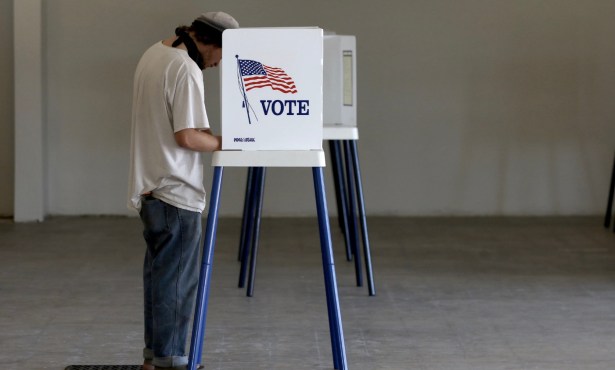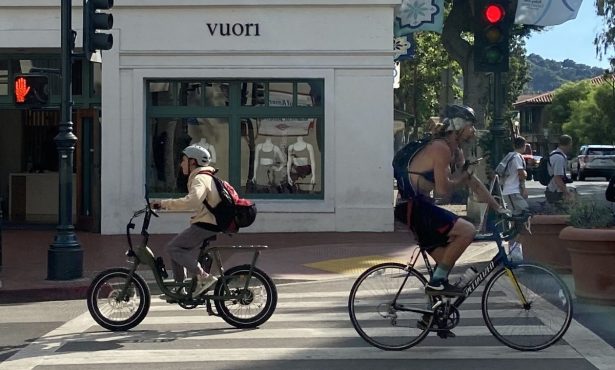A Dog Inflamed
You Don’t Miss Your Water Till Your Dam Runs Dry…
SANTA ANA BLUES: There was no cool shank of the morning the day Art Ludwig showed up. Even in the pre-dawn cocoon of 5 a.m., the molecules in the air were seething and ready to swarm. When the sun eventually came up, it went hunting for fresh faces to decapitate. There are various names for the winds rushing off our mountains, but when they blow, wrote Raymond Chandler, “meek little wives feel the edge of the carving knife and study their husbands’ necks.” At the City Council meeting the day before, former mayor Sheila Lodge — perhaps the most ornery and persistent civic activist in city history — wondered testily whether this is the 18th or 19th consecutive month of hottest weather ever.

Art Ludwig came in without appointment or warning, radiating a relentless optimism about the rationality of his fellow Homo sapiens despite evidence to the contrary. Art is a water warrior who preaches the gospel of conservation. His good cheer is all but bulletproof; no one can gaze upon his array of pie charts and bar graphs and not be moved. Were it not for the desperation lurking in the crevices of his laughter — always quick to explode — Art could be a hard guy to take.
He buttered me up and got to the point. Art wanted me to help “save” the community. For the record, that’s not in my job description. It’s also against my religion; the last guy who tried it ended up on a cross. The day before, the City Council had wrestled itself into a state of agonized exhaustion whether to ban lawn watering in the face of the worst drought in recorded ever. The council found itself terminally betwixt and between, but wasn’t ready to dispatch the hell hounds of Big Brother quite yet. Local residents were conserving water at unprecedented rates — 42 percent. What more could you ask? And did the council really want to dispatch drones to spy on city residents? Councilmember Gregg Hart, in particular, cautioned against the cheap theatrics of rhetorical “optics” that didn’t generate real water savings.
These questions weren’t necessarily wrong. They just weren’t right. Not by a long shot. Hart’s right; it ain’t about optics. It’s about reality. With the January grand opening of the desal plant looking iffier and iffier, the 1,000 acre-feet of water a lawn ban would save is, well, 1,000 acre-feet. The disconnect between all of us and the violence of this drought has been nothing short of profound. So long as water comes out of our spigots, we can keep making Kool-Aid. I went up to Lake Cachuma a few weeks ago. The water level at a spot I’d visited shortly before had dropped 16 feet. What had recently been water now was mud. We are entering the second consecutive year that the single most important water source will provide zero water. Zero. That wet stuff in the lake has been “carried over” — unused — from previous years, about 3,000 acre-feet. Most of it — another 12,000 acre-feet — is the “Dead Pool,” the absolute rock bottom that the feds, who own and built the dam back in the ’50s, will allow. Any lower than that, the lake ceases to function as a lake. It also ceases to provide the key medium by which the water being pumped into the dam via the state water system — just enough, by the way, to counter losses inflicted by evaporation — can get to our spigots. We’ve never been here before.
Ever.
About a year ago, water managers started talking about counting “drops of water.” As things got more desperate, they moved on to counting “molecules.” Now, with the lake all but empty, they’re all but counting the number of angels that can dance on the head of a pin. They’ve embraced a new hyper-theoretical calculus that gives them permission to “borrow” water that has yet to even fall — known as “banked rain.” This allows them to use water that doesn’t really exist — not as drops and not as molecules — without somehow violating the sanctity of the Dead Pool. Desperate times call for desperate accounting practices.
In this context, a lawn ban sends an absolutely essential message; it’s time to wake up and smell the roses, but only after we let them die. Let your lawns go, too. Many people already have. More need to. Since the drought started, Art Ludwig told the council that city water customers poured 14,000 acre-feet of water on their lawns. That’s what city residents used annually before the last drought.
Art is bursting with such fun facts. The amount of acreage under lawn “cultivation” in the United States, he told me, is four times that of corn. Lawns consume 60 million acre-feet of water a year, more than rice, cotton, and almonds combined. Art can tell you how many tons of fertilizer and pesticides are required to keep these lawns glistening green — three million and 30,000 tons respectively — and that 100,000 people are dispatched to ERs a year because of lawn-mower-related accidents, 95 percent of which, he said, required amputation. His mom, it turns out, was one.
I think a lawn-watering ban works. Here’s a clue. Enforcement is not necessary. More people will cut back water use with a ban than without one. It’s that simple. You don’t need backyard drones or water cops. Laws make statements. Some statements need to be made.
In the meantime, I came up with a new ad campaign for Art. “Lawn: It’s the new fur.” It was the best I could conjure in such short order. Two hours later, I got an email. There was a photo of actress Sharon Stone staring back at me, doing her sultry Sharon Stone sashay. I don’t remember what she was wearing. Maybe nothing. But draped across her shoulders, in lieu of a fur stole, was a big green swath of turf. It worked. But as hot as it was, a ban would work better still.



